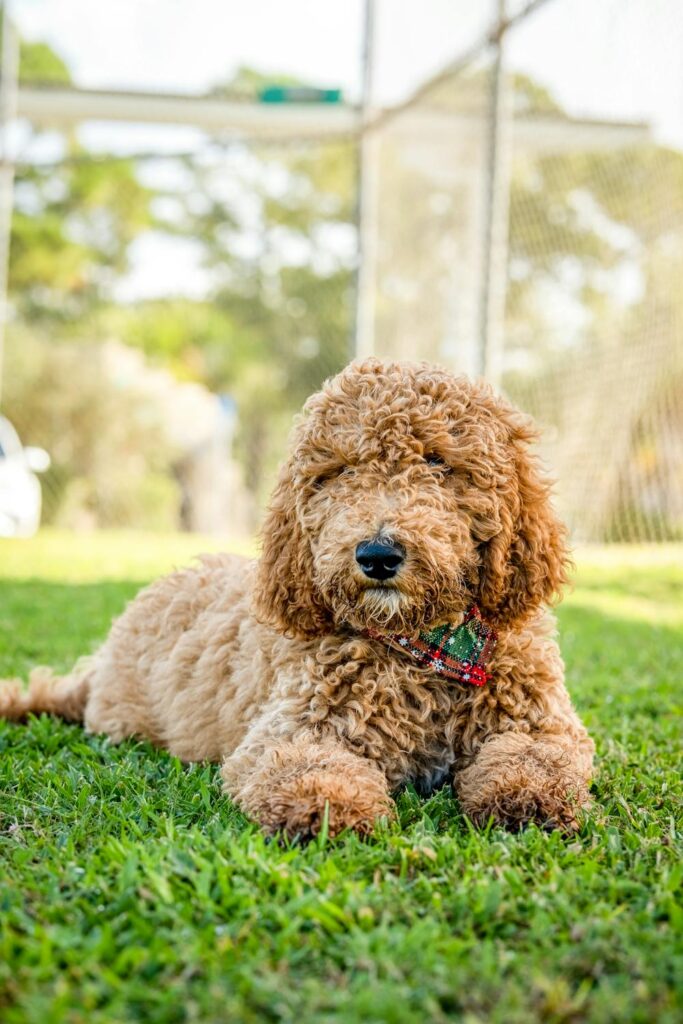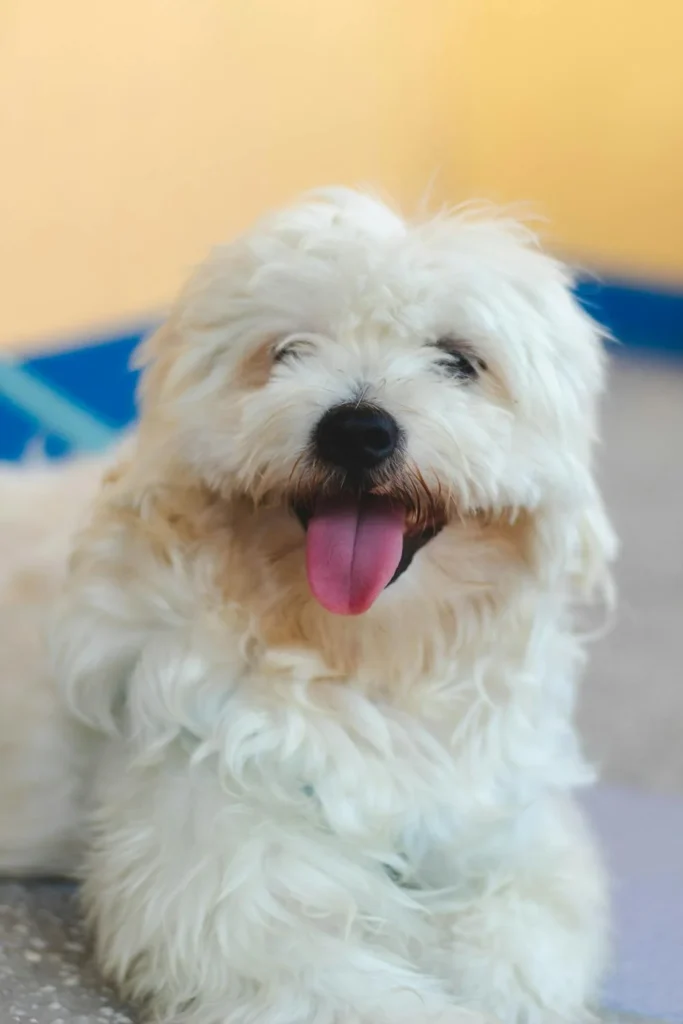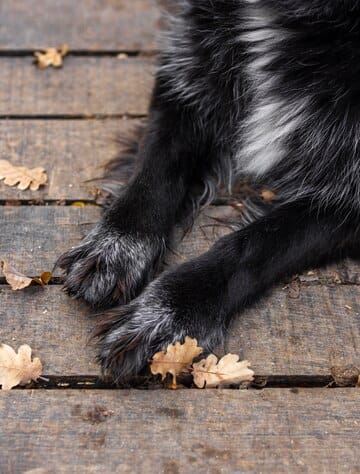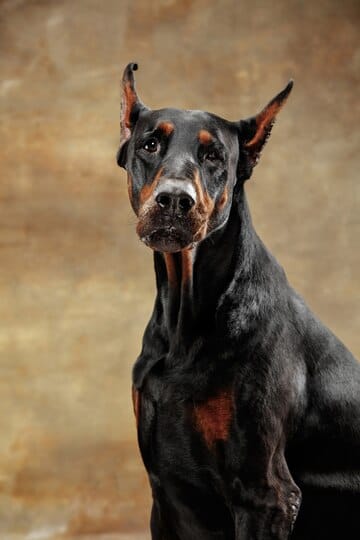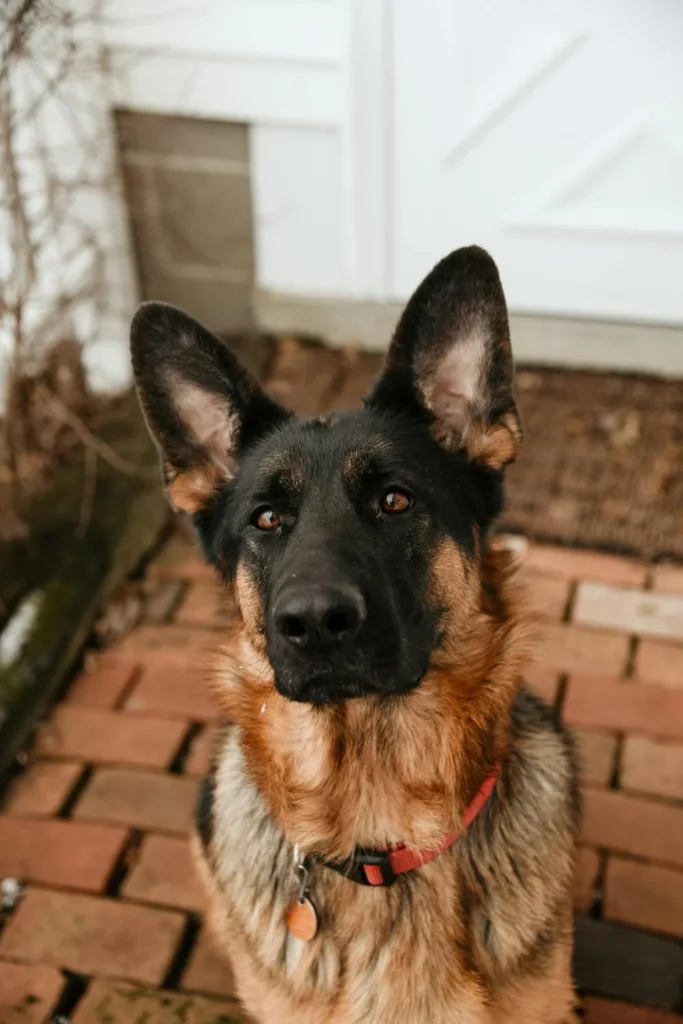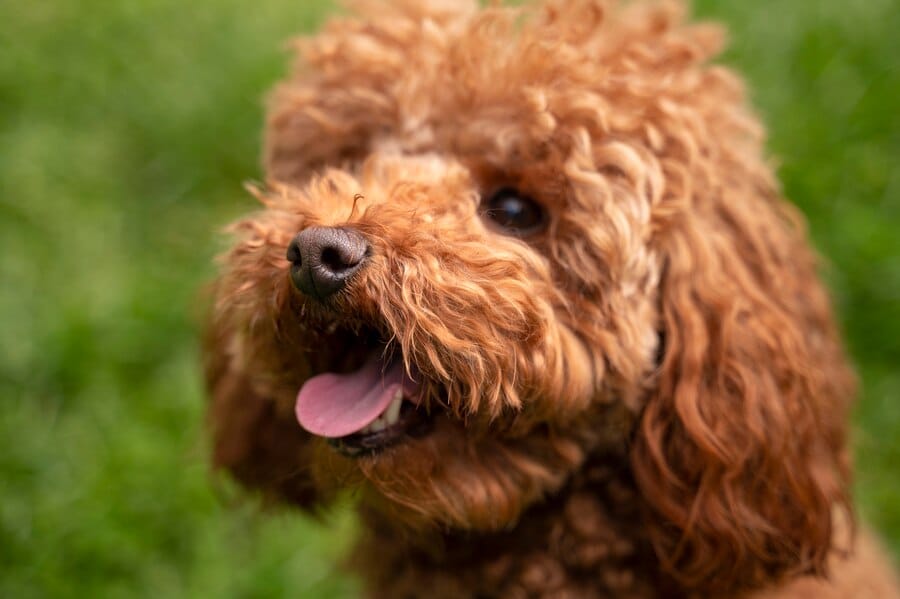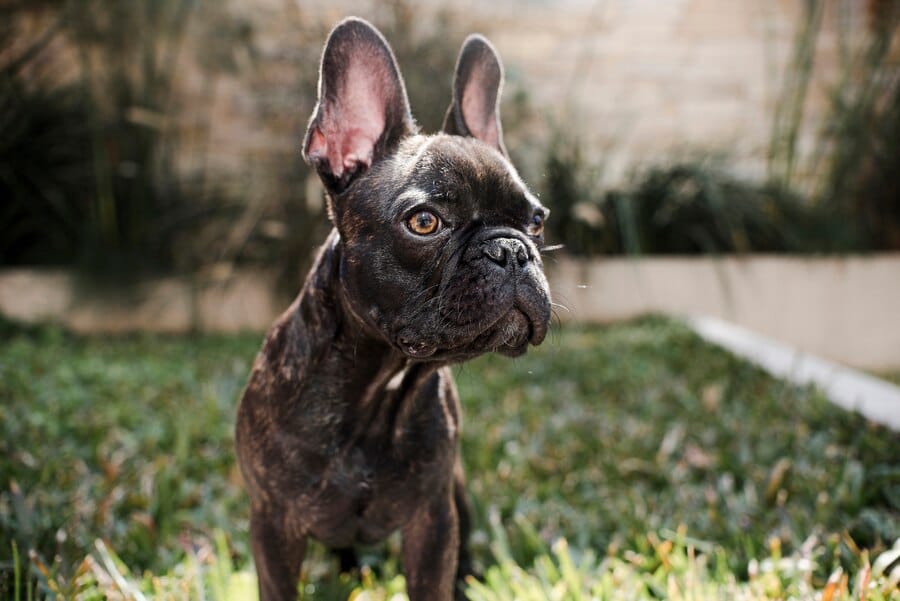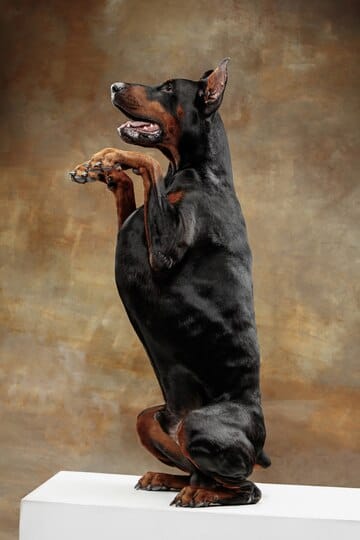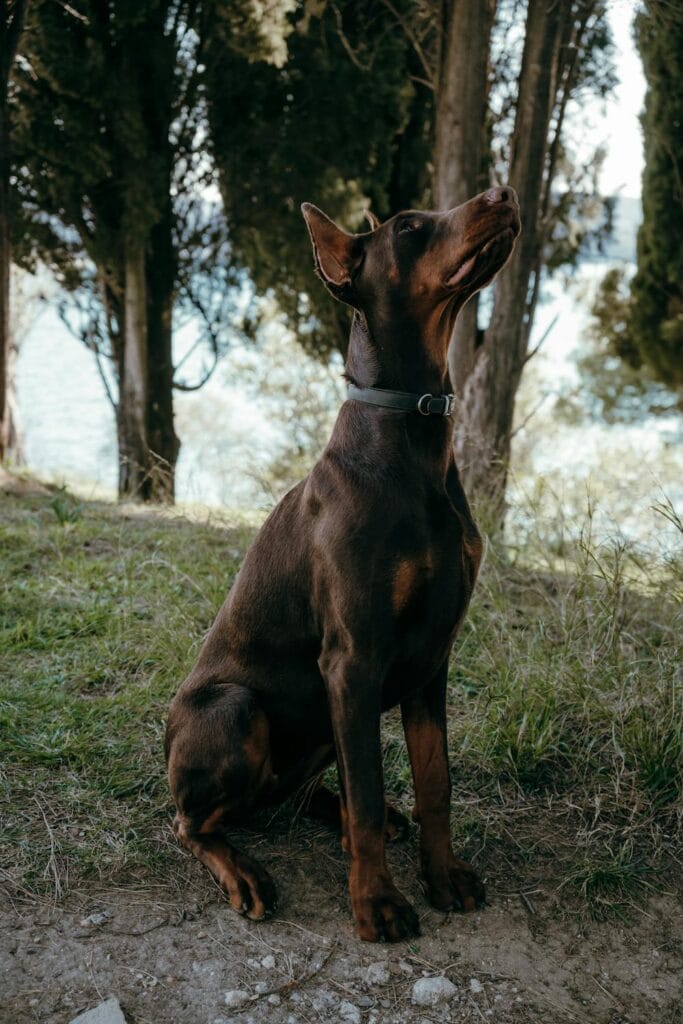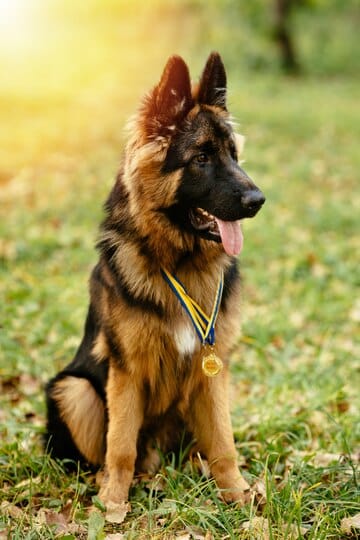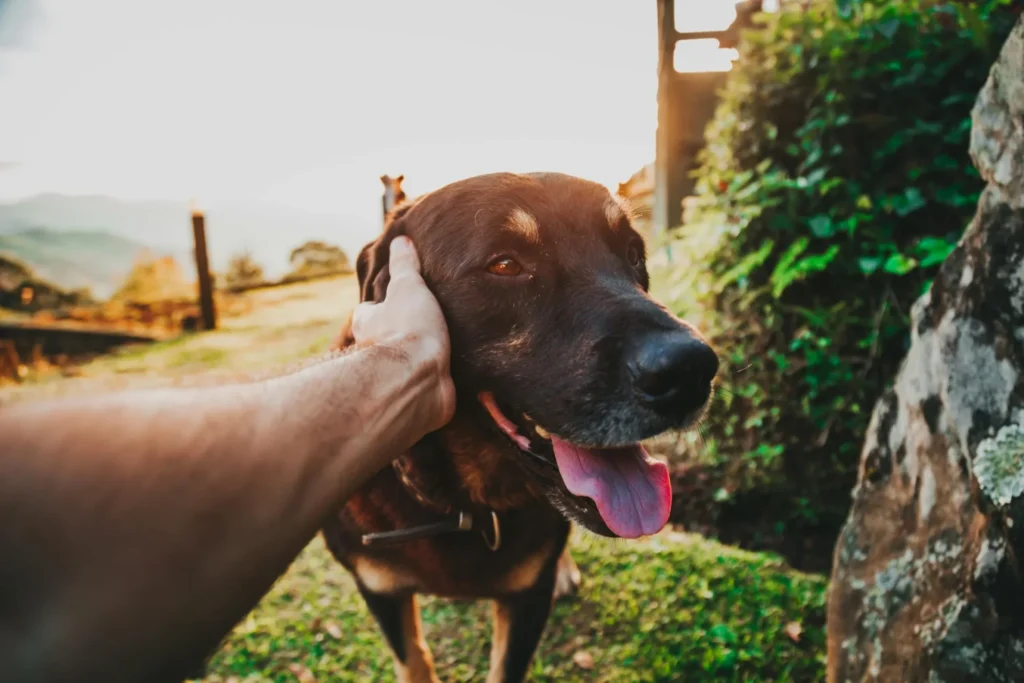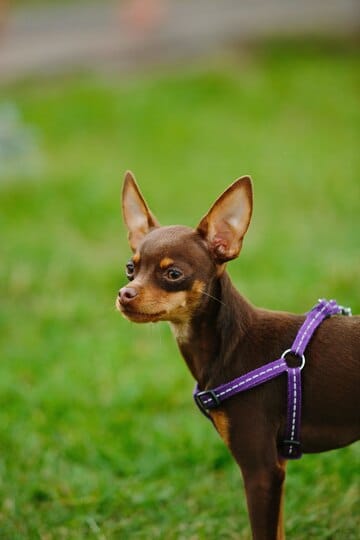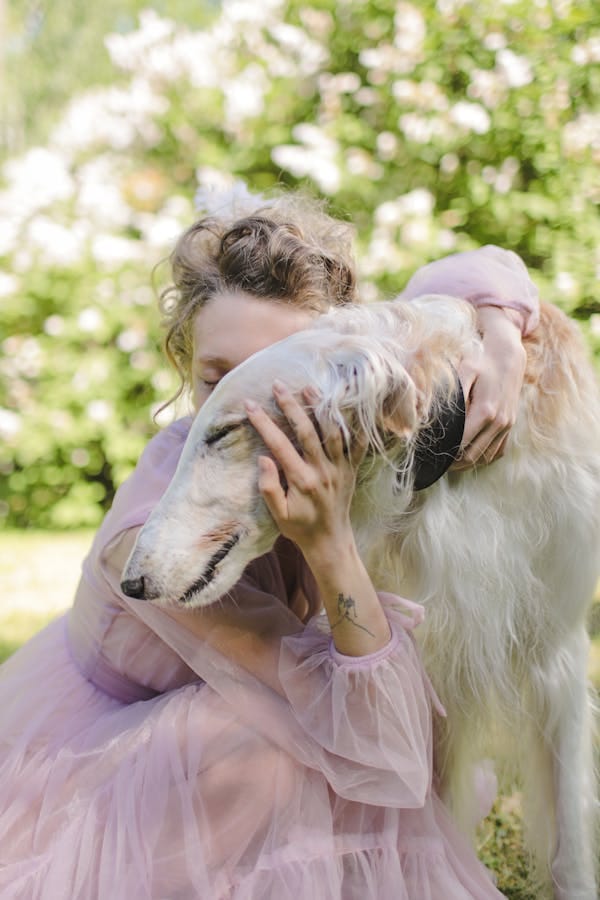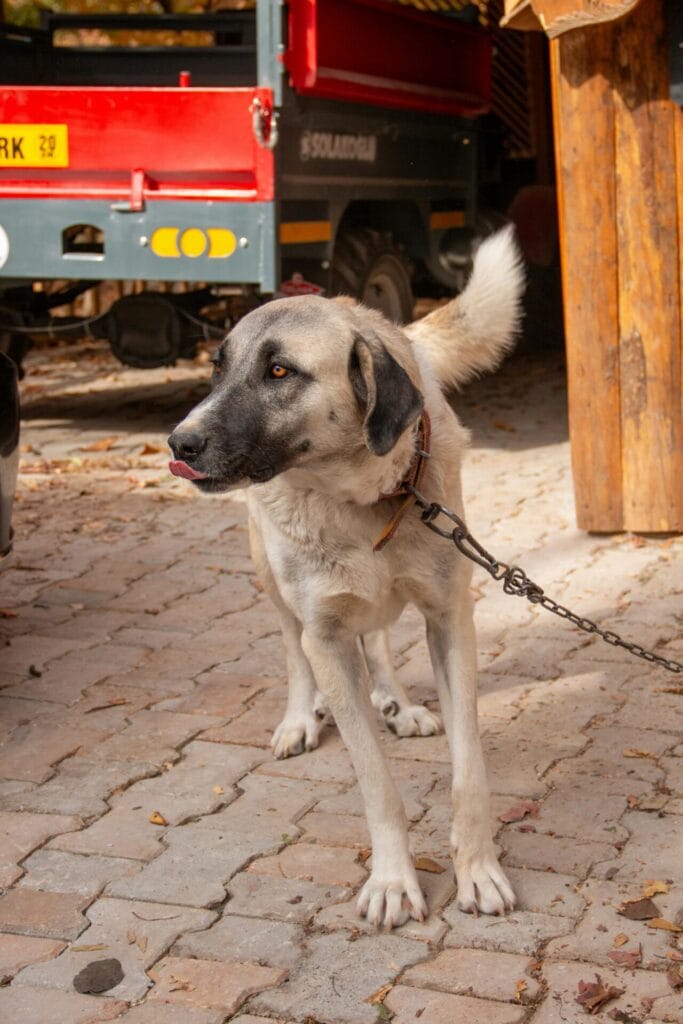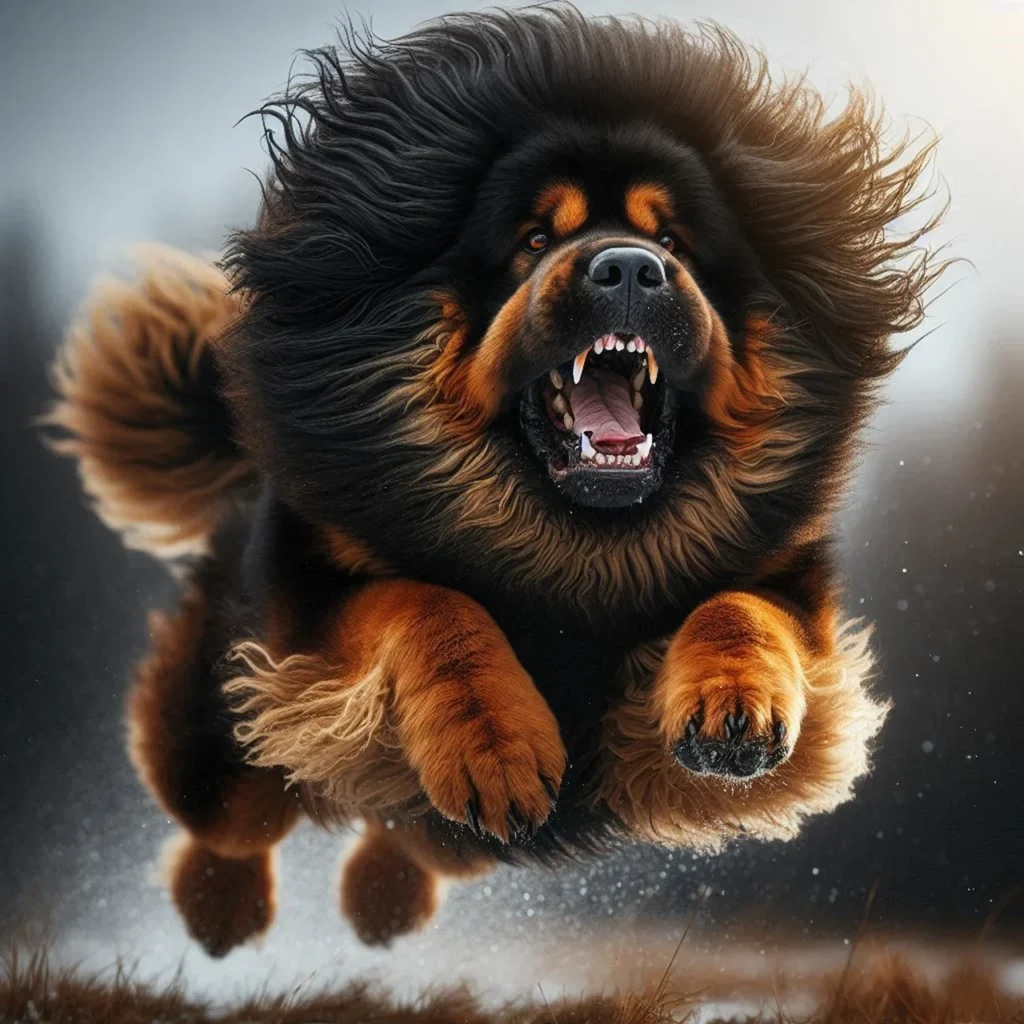- Introduction: Understanding Bulldog Weight Issues
- The Basics of Bulldog Weight Management
- Assessing Your Bulldog’s Weight
- Setting Realistic Weight Loss Goals
- Bulldog Diet for Weight Loss
- Bulldog Exercise: Getting Your Pup Moving
- Monitoring Progress and Adjusting the Plan
- Breed-Specific Considerations
- Common Challenges and Solutions
- The Role of Veterinary Care
- Maintaining a Healthy Weight Long-Term
- Advanced Strategies for Stubborn Cases
- 1. Metabolic Testing
- 2. Prescription Weight Loss Diets
- 3. Structured Exercise Programs
- 4. Hydrotherapy
- 5. Acupuncture and Alternative Therapies
- 6. Meal Frequency Adjustments
- 7. Gut Health Optimization
- 8. Stress Reduction Techniques
- 9. Advanced Food Puzzles
- 10. Targeted Supplementation
- 11. Body Composition Analysis
- 12. Environmental Enrichment
- Advanced Strategy Comparison
- Comparing Bulldogs to Other Breeds
- Success Stories: Before and After
- 1. Rocky the English Bulldog
- 2. Lola the French Bulldog
- 3. Bruno the American Bulldog
- 4. Daisy the Olde English Bulldogge
- Success Metrics Table
- Lessons Learned from Success Stories
- Owner Testimonials
- Before and After Activity Levels
- Health Improvements Beyond Weight Loss
- Challenges Overcome
- Tips from Successful Owners
- Long-Term Outcomes
- FAQs: Your Bulldog Weight Loss Questions Answered
- 1. Q: How long will it take for my bulldog to reach a healthy weight?
- 2. Q: Can I still give my bulldog treats during the weight loss process?
- 3. Q: My bulldog seems hungry all the time on their diet. What can I do?
- 4. Q: Is it safe for my bulldog to exercise if they’re very overweight?
- 5. Q: Should I use a weight loss supplement for my bulldog?
- 6. Q: My bulldog loses weight but then plateaus. What should I do?
- 7. Q: Are prescription weight loss diets worth the cost?
- 8. Q: How can I tell if my bulldog is at a healthy weight?
- 9. Q: Is swimming a good exercise for bulldogs?
- 10. Q: My bulldog has lost weight but still seems to have a big belly. Is this normal?
- FAQ Quick Reference Table
- Conclusion: Celebrating Your Bulldog’s Journey to Health
Introduction: Understanding Bulldog Weight Issues
Ah, bulldogs! Those adorable, wrinkly-faced bundles of joy that have stolen our hearts. 🐶❤️ But let’s face it, these lovable pooches have a tendency to pack on the pounds. If you’re reading this, chances are you’ve noticed your bulldog looking a bit more… rotund than usual. Don’t worry, you’re not alone! Many bulldog owners find themselves in the same boat, wondering how to help their chubby companions slim down.
In this comprehensive guide, we’ll dive deep into the world of bulldog weight management. From understanding why bulldogs are prone to weight gain to creating a tailored diet and exercise plan, we’ve got you covered. So, grab a cup of coffee (or a healthy snack – let’s lead by example!), and let’s embark on this journey to help your bulldog achieve a healthier, happier life. 🚶♂️🐾
Why Bulldogs Gain Weight Easily
Before we jump into solutions, it’s crucial to understand why bulldogs are more susceptible to weight gain than some other breeds:
- Genetics: Bulldogs are bred for a stocky build, which can predispose them to weight gain.
- Low metabolism: Their bodies burn calories slower than many other breeds.
- Breathing difficulties: Due to their brachycephalic (flat-faced) nature, intense exercise can be challenging.
- Love for food: Many bulldogs are enthusiastic eaters, making portion control essential.
- Reduced activity levels: Bulldogs are generally less active than some other breeds.
Understanding these factors will help us create a more effective weight loss plan for your bulldog. Now, let’s roll up our sleeves and get started! 💪
The Basics of Bulldog Weight Management
Before we dive into specific strategies, let’s cover the fundamental principles of helping your bulldog lose weight:
- Calorie control: The cornerstone of weight loss is creating a calorie deficit.
- Balanced nutrition: Ensuring your bulldog gets all necessary nutrients while reducing calories.
- Regular exercise: Tailored to your bulldog’s abilities and health status.
- Consistency: Sticking to the plan even when progress seems slow.
- Patience: Healthy weight loss takes time, especially for bulldogs.
- Veterinary guidance: Regular check-ups to monitor progress and health.
Remember, weight loss for bulldogs isn’t about achieving a “skinny” look. The goal is to reach a healthy weight that allows your bulldog to breathe easier, move more comfortably, and live a longer, happier life. 🎯🐾
Assessing Your Bulldog’s Weight
Before embarking on a weight loss journey, it’s crucial to determine if your bulldog is indeed overweight. Here’s how you can assess your pup’s body condition:
Body Condition Score (BCS)
Veterinarians use a 9-point Body Condition Score system to evaluate a dog’s weight:
- 1-3: Underweight
- 4-5: Ideal weight
- 6-9: Overweight to obese
Here’s a simplified version you can use at home:
- Feel the ribs: You should be able to feel the ribs without pressing too hard. If you can’t feel them at all, your bulldog may be overweight.
- Look for a waist: When viewed from above, your bulldog should have a visible waist behind the ribs.
- Check the abdomen: From the side, the abdomen should tuck up from the ribcage to the hind legs.
Weight Chart
While individual bulldogs can vary, here’s a general weight chart for adult English Bulldogs:
| Gender | Ideal Weight Range (lbs) |
|---|---|
| Male | 50-55 |
| Female | 40-50 |
Remember, these are guidelines. Your veterinarian can provide a more accurate assessment based on your bulldog’s individual build and health status. 📊
Setting Realistic Weight Loss Goals
Now that you’ve determined your bulldog needs to lose weight, it’s time to set some goals. But remember, slow and steady wins the race when it comes to canine weight loss.
Safe Weight Loss Rate
For most dogs, including bulldogs, a safe weight loss rate is 1-2% of body weight per week. For a 60-pound bulldog, that’s about 0.6 to 1.2 pounds per week.
Here’s a sample weight loss timeline for a bulldog starting at 60 pounds with a goal weight of 50 pounds:
| Week | Expected Weight (lbs) |
|---|---|
| 0 | 60 |
| 4 | 57-58 |
| 8 | 54-56 |
| 12 | 51-54 |
| 16 | 50 (Goal reached) |
Remember, this is just an example. Your bulldog’s weight loss journey may take more or less time. The key is consistency and patience. 🐢💪
Bulldog Diet for Weight Loss
Diet plays a crucial role in your bulldog’s weight loss journey. Let’s break down the key components of a successful weight loss diet for bulldogs:
1. Calorie Reduction
The first step is to reduce your bulldog’s calorie intake. However, it’s important not to cut calories too drastically, as this can lead to nutritional deficiencies.
Calorie Calculation: A general rule of thumb for weight loss in dogs is to reduce calorie intake by 20-25%. Here’s a simple formula:
Daily calories = (30 x ideal weight in kg) + 70For a bulldog with an ideal weight of 50 pounds (22.7 kg):
Daily calories = (30 x 22.7) + 70 = 751 calories
For weight loss, reduce this by 20-25%:
Weight loss calories = 563-601 calories per day
2. High-Quality Protein
Protein is essential for maintaining muscle mass during weight loss. Look for dog foods with high-quality protein sources like chicken, fish, or turkey as the first ingredient.
3. Fiber-Rich Foods
Fiber helps your bulldog feel full while consuming fewer calories. Look for foods with ingredients like:
- Pumpkin
- Sweet potato
- Green beans
- Carrots
4. Low-Fat Options
While some fat is necessary for a balanced diet, reducing overall fat intake can help with weight loss. Look for dog foods with moderate to low fat content.
5. Portion Control
Measuring your bulldog’s food is crucial. Use a measuring cup or a kitchen scale for accuracy. Here’s a sample feeding schedule:
| Meal | Time | Portion |
|---|---|---|
| Breakfast | 7 AM | 1/3 of daily calorie allowance |
| Lunch (optional) | 1 PM | 1/3 of daily calorie allowance |
| Dinner | 7 PM | Remaining daily calorie allowance |
6. Treats
Treats should make up no more than 10% of your bulldog’s daily calorie intake. Opt for low-calorie options like:
- Small pieces of carrot
- Green beans
- Commercial low-calorie dog treats
7. Water
Ensure your bulldog always has access to fresh, clean water. Proper hydration can help with weight loss and overall health.
Sample Bulldog Weight Loss Diet Plan
Here’s a sample daily meal plan for a bulldog on a 600-calorie diet:
| Meal | Food | Calories |
|---|---|---|
| Breakfast | 1/2 cup weight management dog food | 200 |
| 1/4 cup green beans | 10 | |
| Dinner | 1/2 cup weight management dog food | 200 |
| 1/4 cup pumpkin puree | 20 | |
| Treats | 2-3 small, low-calorie dog treats | 30 |
| Total | 460 |
This plan leaves room for an extra treat or a bit more food if needed, while still promoting weight loss.
Remember, always consult with your veterinarian before making significant changes to your bulldog’s diet. They can help you create a personalized meal plan that meets your dog’s specific needs. 🥩🥕🍗
Bulldog Exercise: Getting Your Pup Moving
Exercise is crucial for your bulldog’s weight loss journey, but it’s important to approach it carefully due to their unique physical characteristics. Let’s explore safe and effective ways to get your bulldog moving:
1. Start Slow
If your bulldog isn’t used to regular exercise, start with short, low-intensity sessions and gradually increase duration and intensity.
2. Walking
Walking is an excellent low-impact exercise for bulldogs. Start with 10-15 minute walks twice a day and gradually increase as your bulldog’s stamina improves.
Walking Schedule Example:
| Week | Duration | Frequency |
|---|---|---|
| 1-2 | 10 mins | 2x daily |
| 3-4 | 15 mins | 2x daily |
| 5-6 | 20 mins | 2x daily |
| 7+ | 20-30 mins | 2-3x daily |
3. Swimming
Many bulldogs enjoy swimming, which is a great low-impact, full-body workout. Always supervise your bulldog in the water and consider using a doggy life jacket.
4. Indoor Games
For days when outdoor exercise isn’t possible, try these indoor activities:
- Hide and seek with treats or toys
- Gentle tug-of-war
- Rolling a ball for your bulldog to chase
5. Puzzle Toys
Mental stimulation can help burn calories too. Use puzzle toys or treat-dispensing toys to keep your bulldog active and engaged.
6. Short Play Sessions
Instead of one long exercise session, try multiple short play sessions throughout the day. This can be easier on your bulldog’s breathing and joints.
7. Cool Down Periods
Always allow for cool-down periods after exercise, especially in warm weather. Bulldogs can overheat easily due to their short snouts.
Exercise Intensity Guide
| Exercise Type | Intensity | Duration | Frequency |
|---|---|---|---|
| Walking | Low | 15-30 mins | Daily |
| Swimming | Moderate | 10-15 mins | 2-3x week |
| Indoor Play | Low | 10-15 mins | 2-3x daily |
| Puzzle Toys | Low | 15-20 mins | Daily |
Remember, every bulldog is different. Always monitor your dog for signs of fatigue or distress during exercise. If you notice excessive panting, drooling, or reluctance to continue, stop the activity and allow your bulldog to rest. 🏊♂️🎾🐕
Monitoring Progress and Adjusting the Plan
Keeping track of your bulldog’s progress is crucial for a successful weight loss journey. Here’s how to monitor and adjust your plan:
1. Regular Weigh-Ins
Weigh your bulldog weekly, at the same time of day. Keep a log of the weights to track progress over time.
2. Body Condition Assessments
Perform a body condition assessment every 2-4 weeks. This can help you notice changes that might not be reflected on the scale.
3. Progress Photos
Take photos of your bulldog from the side and top view every month. Visual comparisons can be very motivating!
4. Adjust Calories as Needed
If your bulldog isn’t losing weight after 2-3 weeks, you may need to reduce calories slightly. Conversely, if weight loss is too rapid, you may need to increase calories.
5. Exercise Adjustments
As your bulldog becomes more fit, gradually increase exercise duration or intensity.
6. Regular Vet Check-Ups
Schedule check-ups with your vet every 1-2 months to ensure your bulldog is losing weight safely.
Progress Tracking Chart
| Week | Weight | BCS | Exercise Duration | Notes |
|---|---|---|---|---|
| 0 | 60 lbs | 7/9 | 20 mins/day | Starting weight |
| 4 | 58 lbs | 7/9 | 30 mins/day | More energy noticed |
| 8 | 55 lbs | 6/9 | 40 mins/day | Visible waist forming |
| 12 | 53 lbs | 6/9 | 45 mins/day | Vet check-up scheduled |
Remember, weight loss isn’t always linear. There may be weeks where your bulldog’s weight plateaus. Don’t get discouraged – this is normal! Stay consistent with your plan and celebrate non-scale victories like increased energy or improved mobility. 📊🏆
Breed-Specific Considerations
When it comes to weight loss, not all bulldogs are created equal. Different bulldog breeds have unique characteristics that can affect their weight loss journey. Let’s explore some breed-specific considerations:
English Bulldog
- Prone to overheating
- May have breathing difficulties
- Often less active
Tips:
- Focus on low-impact exercises
- Avoid exercising in hot weather
- Consider hydrotherapy for joint-friendly exercise
French Bulldog
- Smaller size, but still prone to weight gain
- Generally more active than English Bulldogs
- May have spine issues
Tips:
- Engage in short, frequent play sessions
- Avoid activities that strain the back
- Swimming can be great if they enjoy water
American Bulldog
- More athletic than other bulldog breeds
- Higher exercise tolerance
- Still prone to joint issues
Tips:
- Can handle more intense exercise
- Incorporate agility training
- Monitor for signs of joint discomfort
Olde English Bulldogge
- More athletic build
- Better breathing capacity than English Bulldogs
- Still prone to overheating
Tips:
- Can handle longer exercise sessions
- Incorporate strength training exercises
- Always provide cool-down periods
Breed Comparison Chart
| Breed | Avg. Weight (lbs) | Exercise Tolerance | Special Considerations |
|---|---|---|---|
| English Bulldog | 40-50 | Low | Breathing issues, overheating |
| French Bulldog | 16-28 | Moderate | Spine issues, breathing problems |
| American Bulldog | 60-120 | High | Joint health, high energy needs |
| Olde English Bulldogge | 50-80 | Moderate to High | Overheating, joint health |
Remember, regardless of the specific breed, each bulldog is an individual. Always tailor your weight loss plan to your dog’s unique needs and abilities. 🐾🏋️♂️
Common Challenges and Solutions
Even with the best intentions, you may encounter some roadblocks on your bulldog’s weight loss journey. Let’s address some common challenges and their solutions:
1. Stubborn Weight
Challenge: Your bulldog’s weight isn’t budging despite following the plan.
Solution:
- Re-evaluate your calorie calculations
- Increase exercise gradually
- Consider a metabolic workup with your vet to rule out medical issues like hypothyroidism
2. Begging Behavior
Challenge: Your bulldog constantly begs for food, making it hard to stick to the diet.
Solution:
- Stick to a consistent feeding schedule
- Use puzzle toys to make meals last longer
- Offer low-calorie treats like carrots or green beans
- Distract with play or attention instead of food
3. Family Members Sneaking Treats
Challenge: Other family members or visitors can’t resist those puppy eyes and give extra treats.
Solution:
- Educate everyone about the importance of the diet
- Keep a treat log visible to all
- Provide alternative ways for family to show affection (e.g., playtime, grooming)
4. Exercise Intolerance
Challenge: Your bulldog seems uncomfortable or tired during exercise.
Solution:
- Start with very short sessions (even 5 minutes) and gradually increase
- Try low-impact exercises like swimming or underwater treadmill
- Consider physical therapy or rehabilitation for tailored exercise plans
5. Plateau in Weight Loss
Challenge: After initial success, your bulldog’s weight loss stalls.
Solution:
- Reassess calorie intake and adjust if necessary
- Increase exercise intensity or duration slightly
- Add variety to exercise routine to challenge different muscle groups
6. Lack of Motivation (Yours or Your Bulldog’s)
Challenge: It’s hard to stay motivated when progress is slow.
Solution:
- Set small, achievable goals
- Celebrate non-scale victories (e.g., increased energy, easier breathing)
- Join online communities or local groups for support
- Make exercise fun with new toys or activities
7. Hot Weather Limitations
Challenge: Bulldogs are prone to overheating, making outdoor exercise difficult in warm weather.
Solution:
- Exercise early morning or late evening when it’s cooler
- Use cooling vests or mats
- Try indoor exercises or swimming in a controlled environment
8. Joint Pain
Challenge: Excess weight can cause joint pain, making exercise uncomfortable.
Solution:
- Consult with your vet about joint supplements or medications
- Focus on low-impact exercises like swimming
- Consider acupuncture or massage therapy for pain management
9. Slow Progress
Challenge: Weight loss seems to be taking forever.
Solution:
- Remember that slow, steady weight loss is healthier and more sustainable
- Take progress photos to visualize small changes
- Focus on improved quality of life rather than just numbers on a scale
10. Picky Eating
Challenge: Your bulldog refuses to eat the new, healthier food.
Solution:
- Transition to new food gradually, mixing with old food
- Try different healthy food options to find what your bulldog enjoys
- Use food toppers like low-sodium broth or small amounts of cooked vegetables
Remember, every challenge has a solution. Stay patient and consistent, and don’t hesitate to reach out to your veterinarian for advice when needed. 🐾💪
The Role of Veterinary Care
Your veterinarian is an essential partner in your bulldog’s weight loss journey. Let’s explore how professional veterinary care can support your efforts:
1. Initial Health Assessment
Before starting any weight loss program, a thorough vet check-up is crucial. This may include:
- Physical examination
- Blood work to check organ function and rule out underlying conditions
- Thyroid function test
- Joint health assessment
2. Customized Weight Loss Plan
Your vet can help create a tailored plan considering your bulldog’s:
- Age
- Current weight and body condition
- Overall health status
- Any existing medical conditions
3. Regular Monitoring
Scheduled check-ups allow your vet to:
- Monitor weight loss progress
- Adjust the plan as needed
- Catch any potential health issues early
4. Nutritional Guidance
Vets can provide expert advice on:
- Appropriate calorie intake
- Best food choices for your bulldog’s needs
- Safe treat options
5. Exercise Recommendations
Based on your bulldog’s health status, your vet can suggest:
- Safe exercise types and duration
- Red flags to watch for during exercise
- Potential physical therapy or rehabilitation options
6. Medication Management
If necessary, your vet may prescribe:
- Joint supplements for mobility
- Pain management for arthritis
- Medications to support weight loss in certain cases
7. Addressing Comorbidities
Obesity often comes with other health issues. Your vet can help manage conditions like:
- Arthritis
- Respiratory problems
- Skin fold infections
8. Behavioral Support
Vets can offer advice on:
- Managing begging behaviors
- Positive reinforcement techniques
- Enrichment activities to replace food rewards
9. Body Condition Scoring
Regular professional body condition scoring helps:
- Track progress beyond just weight
- Adjust goals as needed
- Motivate you by noting improvements
10. Long-term Health Planning
Your vet can help you:
- Set realistic long-term health goals
- Plan for maintenance after reaching ideal weight
- Address age-related changes in metabolism and activity levels
Veterinary Visit Schedule
| Stage of Weight Loss | Recommended Vet Visit Frequency |
|---|---|
| Initial Assessment | Comprehensive exam |
| First 1-2 Months | Every 2-4 weeks |
| Ongoing Weight Loss | Every 4-8 weeks |
| Maintenance Phase | Every 3-6 months |
Remember, your veterinarian is your ally in this journey. Don’t hesitate to reach out with questions or concerns between scheduled visits. Regular communication can make a big difference in your bulldog’s success! 🏥👨⚕️🐾
Maintaining a Healthy Weight Long-Term
Congratulations! Your bulldog has reached their target weight. Now, the challenge is maintaining this healthier weight for the long haul. Here’s how to keep your bulldog fit and fabulous:
1. Gradual Transition to Maintenance
- Slowly increase calorie intake (by about 10%) to find the right balance for weight maintenance
- Monitor weight weekly to catch any gains early
2. Consistent Exercise Routine
- Continue regular exercise, adjusting as needed for your bulldog’s age and health
- Aim for at least 30 minutes of activity daily, split into shorter sessions if needed
3. Regular Weigh-Ins
- Weigh your bulldog at least once a month
- Keep a log to spot trends early
4. Portion Control
- Continue measuring food to prevent overfeeding
- Adjust portions based on activity level and age
5. Healthy Treats
- Stick to low-calorie, healthy treats
- Keep treats to no more than 10% of daily calorie intake
6. Regular Vet Check-Ups
- Schedule bi-annual check-ups to monitor overall health
- Discuss any changes in weight or behavior promptly
7. Adjust for Life Changes
- Be prepared to adjust diet and exercise for factors like:
- Aging
- Changes in household routine
- New health conditions
8. Mental Stimulation
- Use puzzle feeders and toys to make eating more engaging
- Incorporate training sessions for mental exercise
9. Family Involvement
- Ensure all family members and regular visitors understand the importance of maintaining your bulldog’s healthy weight
- Create a “house rules” list for feeding and treating
10. Seasonal Adjustments
- Be aware of how seasons affect your bulldog’s activity level and adjust food intake accordingly
- In hot weather, focus on indoor activities to prevent overheating
Maintenance Plan Example
| Area | Strategy |
|---|---|
| Diet | 2 measured meals daily, adjusted for activity level |
| Exercise | 30 minutes daily (2 15-minute walks or play sessions) |
| Treats | Limited to 30 calories per day from low-calorie options |
| Monitoring | Monthly weigh-ins, body condition scoring every 3 months |
| Vet Visits | Bi-annual check-ups, more frequently if health changes occur |
Remember, maintaining a healthy weight is a lifelong commitment. Stay vigilant, be consistent, and celebrate your bulldog’s continued health and vitality! 🎉🐾💪
Advanced Strategies for Stubborn Cases
Sometimes, despite your best efforts, your bulldog may struggle to lose weight or maintain their progress. In these cases, it’s time to bring out the big guns. Here are some advanced strategies to consider:
1. Metabolic Testing
- Work with your vet to conduct comprehensive metabolic testing
- Identify any hormonal imbalances or metabolic disorders affecting weight loss
2. Prescription Weight Loss Diets
- Consider veterinary-prescribed weight loss foods
- These diets are formulated to provide optimal nutrition with fewer calories
3. Structured Exercise Programs
- Consult with a canine fitness trainer or rehabilitation specialist
- Develop a tailored exercise program that addresses your bulldog’s specific needs
4. Hydrotherapy
- Utilize underwater treadmills or swimming sessions
- Provides low-impact, high-resistance exercise ideal for overweight dogs
5. Acupuncture and Alternative Therapies
- Explore acupuncture to boost metabolism and reduce inflammation
- Consider therapies like cold laser treatment for joint pain relief
6. Meal Frequency Adjustments
- Try feeding smaller, more frequent meals to boost metabolism
- Use automatic feeders to maintain consistent timing
7. Gut Health Optimization
- Incorporate probiotics to improve digestive health
- Consider prebiotic fiber supplements to promote feelings of fullness
8. Stress Reduction Techniques
- Address any anxiety or stress that may be contributing to overeating
- Try techniques like ThunderShirts, pheromone diffusers, or behavior modification
9. Advanced Food Puzzles
- Use increasingly complex food puzzles to slow eating and provide mental stimulation
- Rotate puzzles to keep your bulldog engaged
10. Targeted Supplementation
- Under veterinary guidance, consider supplements like L-carnitine to support fat metabolism
- Explore joint supplements to improve mobility and encourage activity
11. Body Composition Analysis
- Use advanced techniques like bioelectrical impedance to accurately measure body fat percentage
- Helps track progress beyond just weight on a scale
12. Environmental Enrichment
- Create an environment that encourages natural dog behaviors and movement
- Set up obstacle courses or scent trails in your home or yard
Advanced Strategy Comparison
| Strategy | Pros | Cons | Best For |
|---|---|---|---|
| Metabolic Testing | Identifies underlying issues | Can be expensive | Dogs not responding to standard plans |
| Prescription Diets | Scientifically formulated for weight loss | May be costly, requires prescription | Dogs with specific health needs |
| Hydrotherapy | Low-impact, high-calorie burn | Requires specialized equipment | Dogs with joint issues or low exercise tolerance |
| Acupuncture | May boost metabolism, reduce inflammation | Requires multiple sessions | Dogs with concurrent health issues |
| Advanced Food Puzzles | Mental and physical stimulation | Requires time and patience | Food-motivated dogs |
Remember, these advanced strategies should be implemented under the guidance of your veterinarian. They can help you determine which approaches are most appropriate for your bulldog’s specific situation. With persistence and the right combination of strategies, even the most stubborn weight cases can be overcome! 🏆🐾
Comparing Bulldogs to Other Breeds
Understanding how bulldogs compare to other breeds in terms of weight management can provide valuable context. Let’s explore how our wrinkly friends stack up:
Weight Management Difficulty Scale (1-10, 10 being most difficult)
| Breed | Difficulty | Reasons |
|---|---|---|
| Bulldog | 8-9 | Low metabolism, exercise intolerance, prone to overheating |
| Labrador | 7-8 | High food drive, prone to overeating |
| Beagle | 7 | Scent-driven, prone to food obsession |
| Pug | 7-8 | Similar issues to bulldogs, but slightly more active |
| Border Collie | 3-4 | High energy, naturally active |
| Greyhound | 2-3 | Naturally lean, high metabolism |
Exercise Tolerance Comparison
| Breed | Exercise Needs | Best Activities |
|---|---|---|
| Bulldog | Low to Moderate | Short walks, swimming (supervised) |
| Labrador | High | Long walks, fetch, swimming |
| Beagle | Moderate to High | Scent work, moderate hikes |
| Pug | Low to Moderate | Short play sessions, indoor games |
| Border Collie | Very High | Agility, long runs, intense play |
| Greyhound | Moderate | Short bursts of activity, leisurely walks |
Metabolic Rate Comparison
Metabolic rate affects how easily a breed gains or loses weight. Here’s a rough comparison:
- Greyhound (Highest)
- Border Collie
- Labrador
- Beagle
- Pug
- Bulldog (Lowest)
Breed-Specific Weight Loss Challenges
| Breed | Main Challenges |
|---|---|
| Bulldog | Breathing issues, joint problems, heat intolerance |
| Labrador | Insatiable appetite, joint issues in overweight dogs |
| Beagle | Strong food drive, stubbornness |
| Pug | Similar to bulldogs, but slightly more active |
| Border Collie | Rarely overweight, but can overeat if understimulated |
| Greyhound | Rarely overweight, but can be sensitive to dietary changes |
Time to Reach Ideal Weight (10% weight loss)
| Breed | Estimated Time |
|---|---|
| Bulldog | 4-6 months |
| Labrador | 3-5 months |
| Beagle | 3-4 months |
| Pug | 4-5 months |
| Border Collie | 2-3 months (if needed) |
| Greyhound | 1-2 months (if needed) |
Remember, these are generalizations. Individual dogs within each breed can vary significantly. The key takeaway is that bulldogs often face more challenges in weight management compared to many other breeds, making a tailored approach even more crucial. 🐕🏋️♂️
Success Stories: Before and After
Nothing is more inspiring than real-life success stories. Let’s look at a few bulldogs who’ve successfully shed the pounds and improved their quality of life:
1. Rocky the English Bulldog
Before:
- Weight: 75 lbs
- Barely able to walk for 5 minutes
- Constant panting and discomfort
After:
- Weight: 55 lbs
- Enjoys 30-minute walks twice daily
- Playful and energetic
Key to Success: Strict portion control and daily swim therapy
2. Lola the French Bulldog
Before:
- Weight: 35 lbs
- Struggled with skin infections
- Lethargic and uninterested in play
After:
- Weight: 24 lbs
- Clear, healthy skin
- Loves playing fetch and short agility courses
Key to Success: Switch to a hypoallergenic, low-calorie diet and regular indoor play sessions
3. Bruno the American Bulldog
Before:
- Weight: 130 lbs
- Severe joint pain, difficulty standing
- Breathing issues, especially at night
After:
- Weight: 90 lbs
- Able to go on moderate hikes
- Significantly improved breathing and sleep quality
Key to Success: Gradual increase in exercise, joint supplements, and a prescription weight loss diet
4. Daisy the Olde English Bulldogge
Before:
- Weight: 85 lbs
- Constantly overheating, even indoors
- Low energy, preferred sleeping to any activity
After:
- Weight: 65 lbs
- Enjoys outdoor activities in cooler weather
- Participates in canine sports like weight pulling (under vet supervision)
Key to Success: Combination of diet change, strength training exercises, and environmental management for temperature control
Success Metrics Table
| Dog | Starting Weight | Final Weight | Time to Goal | Key Health Improvements |
|---|---|---|---|---|
| Rocky | 75 lbs | 55 lbs | 6 months | Improved mobility, reduced panting |
| Lola | 35 lbs | 24 lbs | 4 months | Clear skin, increased energy |
| Bruno | 130 lbs | 90 lbs | 8 months | Better joint health, improved breathing |
| Daisy | 85 lbs | 65 lbs | 5 months | Better temperature regulation, increased stamina |
Lessons Learned from Success Stories
- Consistency is Key: All successful bulldogs had owners who stuck to the plan consistently.
- Tailored Approaches Work Best: Each bulldog had a unique plan that addressed their specific needs and challenges.
- Patience Pays Off: Weight loss took time, but the health benefits were worth the wait.
- Exercise Adaptation: Finding the right type of exercise for each bulldog was crucial for success.
- Diet Matters: In all cases, dietary changes played a significant role in weight loss.
Owner Testimonials
“I never thought Rocky would enjoy walks again. Now he’s the one dragging me out the door!” – Rocky’s Owner
“Lola’s transformation wasn’t just physical. Her personality blossomed as she lost weight.” – Lola’s Owner
“Seeing Bruno run and play without pain is the best reward for all our hard work.” – Bruno’s Owner
“Daisy’s weight loss journey brought our whole family together. We’re all healthier now!” – Daisy’s Owner
Before and After Activity Levels
| Dog | Before Daily Activity | After Daily Activity |
|---|---|---|
| Rocky | 5 minutes of walking | Two 30-minute walks, 15 minutes of play |
| Lola | Mostly sleeping | 20 minutes of fetch, 30 minutes of walking |
| Bruno | Difficulty standing for long | 45 minutes of walking, short play sessions |
| Daisy | Sedentary | 30 minutes of strength training, 30-minute walk |
Health Improvements Beyond Weight Loss
- Better Breathing: All bulldogs showed significant improvements in respiratory function.
- Increased Energy: Owners reported their dogs were more playful and engaged.
- Improved Mobility: Less strain on joints led to more comfortable movement.
- Better Sleep: Many owners noticed their bulldogs sleeping more soundly.
- Reduced Medication Needs: Some bulldogs were able to reduce or eliminate certain medications.
Challenges Overcome
Each success story came with its own set of challenges:
- Rocky: Overcoming heat intolerance to exercise regularly.
- Lola: Breaking the habit of begging for treats.
- Bruno: Building strength in weakened joints to support exercise.
- Daisy: Finding engaging indoor activities for weight loss.
Tips from Successful Owners
- “Take lots of ‘before’ pictures. It’s amazing to look back and see the progress.”
- “Find a weight loss buddy – another pet owner on the same journey for support.”
- “Celebrate small victories. Every pound lost is a step towards better health.”
- “Be prepared for plateaus. They happen, but persistence pays off.”
- “Involve the whole family. Consistency is easier when everyone is on board.”
Long-Term Outcomes
Follow-ups with these bulldogs one year after reaching their goal weights showed:
- 75% maintained their goal weight
- 25% gained some weight back but stayed well below their starting weight
- All maintained significantly improved quality of life compared to before weight loss
These success stories demonstrate that with dedication, proper guidance, and a tailored approach, bulldogs can indeed achieve and maintain a healthy weight. The journey may be challenging, but the improvements in health and quality of life make it all worthwhile. 🏆🐾💪
FAQs: Your Bulldog Weight Loss Questions Answered
Let’s address some of the most common questions pet owners have about helping their bulldogs lose weight:
1. Q: How long will it take for my bulldog to reach a healthy weight?
A: The time frame varies, but generally, a safe weight loss rate is 1-2% of body weight per week. For most bulldogs, reaching their goal weight can take 4-8 months.
2. Q: Can I still give my bulldog treats during the weight loss process?
A: Yes, but choose low-calorie options and limit treats to no more than 10% of your bulldog’s daily calorie intake. Consider using portions of their regular meals as treats.
3. Q: My bulldog seems hungry all the time on their diet. What can I do?
A: Try feeding smaller, more frequent meals. Use puzzle feeders to make meals last longer. Add low-calorie vegetables like green beans to meals for added volume without many calories.
4. Q: Is it safe for my bulldog to exercise if they’re very overweight?
A: Start with very short, low-impact exercise sessions and gradually increase duration and intensity. Always consult your vet before starting a new exercise regimen, especially for very overweight dogs.
5. Q: Should I use a weight loss supplement for my bulldog?
A: Always consult your vet before using any supplements. Some, like L-carnitine, may be beneficial, but they should be used under veterinary guidance.
6. Q: My bulldog loses weight but then plateaus. What should I do?
A: Weight loss plateaus are common. Reassess your bulldog’s calorie intake, slightly increase exercise if possible, and be patient. If the plateau persists for more than a few weeks, consult your vet.
7. Q: Are prescription weight loss diets worth the cost?
A: For many bulldogs, especially those with significant weight to lose or other health issues, prescription diets can be very effective. They’re formulated to provide complete nutrition with fewer calories.
8. Q: How can I tell if my bulldog is at a healthy weight?
A: Use the Body Condition Score (BCS) system. You should be able to feel your bulldog’s ribs without pressing hard, and they should have a visible waist when viewed from above.
9. Q: Is swimming a good exercise for bulldogs?
A: Yes, swimming can be excellent low-impact exercise for bulldogs. However, always supervise them closely in water and consider using a doggy life jacket.
10. Q: My bulldog has lost weight but still seems to have a big belly. Is this normal?
A: Bulldogs naturally have a stocky build, so some belly is normal. However, if the belly seems disproportionately large, consult your vet to rule out other issues like bloat or fluid retention.
FAQ Quick Reference Table
| Question Topic | Key Points |
|---|---|
| Time to Reach Goal | 4-8 months on average |
| Treats During Diet | Yes, but limited and low-calorie |
| Hunger Management | More frequent meals, puzzle feeders |
| Safe Exercise | Start slow, gradually increase |
| Supplements | Consult vet before using |
| Weight Loss Plateaus | Reassess diet and exercise, be patient |
| Prescription Diets | Can be very effective for some dogs |
| Healthy Weight Signs | Visible waist, feelable ribs |
| Swimming for Bulldogs | Good but supervise closely |
| Belly Size After Weight Loss | Some belly normal, but check with vet if concerned |
Remember, while these FAQs provide general guidance, every bulldog is unique. Always consult with your veterinarian for personalized advice tailored to your bulldog’s specific needs and health status. 🐾👨⚕️
Conclusion: Celebrating Your Bulldog’s Journey to Health
As we wrap up this comprehensive guide to helping your bulldog lose weight, let’s take a moment to celebrate the journey and reflect on the key takeaways:
1. Every Step Counts 🐾
Remember that every small change you make in your bulldog’s diet and exercise routine is a step towards better health. Celebrate the little victories along the way!
2. Patience is a Virtue 🕰️
Weight loss takes time, especially for bulldogs. Stay consistent and patient, and you will see results.
3. Health is Wealth 💖
The ultimate goal isn’t just a number on the scale, but a happier, healthier, more active bulldog who can enjoy life to the fullest.
4. Teamwork Makes the Dream Work 🤝
Involve your whole family, your vet, and even other pet owners in your bulldog’s weight loss journey. Support and consistency from everyone make a big difference.
5. Knowledge is Power 📚
Understanding your bulldog’s unique needs, challenges, and the science behind weight loss empowers you to make the best decisions for their health.
6. Adaptability is Key 🔑
Be prepared to adjust your approach as needed. What works at the beginning of the journey might need tweaking as your bulldog progresses.
7. Prevention is Easier Than Cure 🛡️
Once your bulldog reaches a healthy weight, maintaining it is crucial. Stay vigilant to prevent future weight gain.
8. Quality of Life is the Ultimate Goal 🌈
Remember that all your efforts are aimed at giving your bulldog a better, more comfortable, and more joyful life.
Final Thoughts
Helping your bulldog lose weight is a journey filled with challenges, but also immense rewards. As you watch your furry friend become more energetic, playful, and comfortable, you’ll know that every effort was worth it.
Your bulldog has been there for you through thick and thin, offering unconditional love and companionship. By committing to their health and well-being, you’re returning that love in the most meaningful way possible.
So, here’s to healthier, happier bulldogs and the dedicated owners who love them. May your journey be filled with wagging tails, playful snorts, and many years of joyful companionship.
Remember, a healthy bulldog is a happy bulldog, and a happy bulldog makes for an even happier you! 🐶💕🎉

